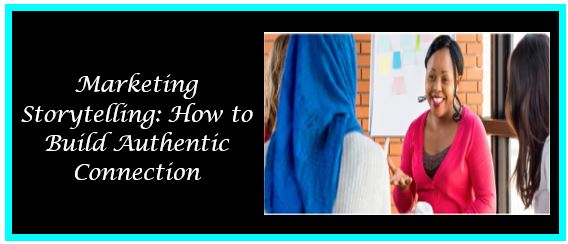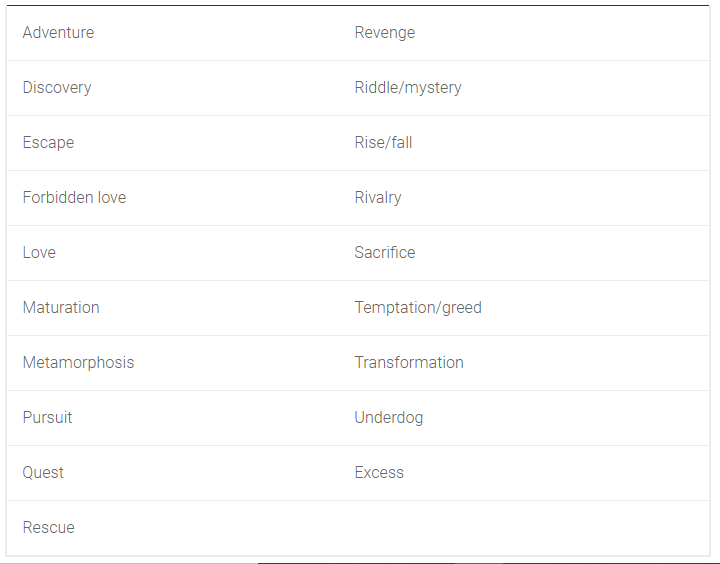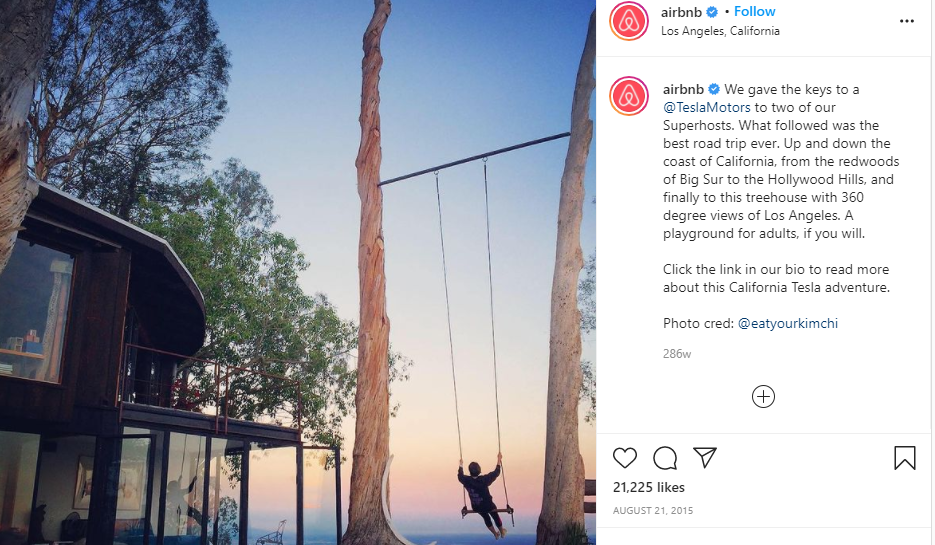
Marketing Storytelling: How to Build Authentic Connection
First Published in Craft Your Content March 4, 2021
Marketing storytelling has been part of human activity for many thousands of years. It is a fundamental part of our human condition. We tell stories every single day because they have the power to inform, persuade, elicit emotional responses, and build relationships. These are lofty achievements for any medium.
The power of marketing storytelling can have both positive and negative effects. The stories we tell ourselves about our goals, achievements, and perceived flaws can facilitate limiting and self-sabotaging beliefs that hold us back.
On the other hand, stories that tell of success and overcoming challenges can be inspiring. The power of a great story can be limitless.
But it’s not enough to simply tell a story to engage an audience. Storytelling is not a tool of information dissemination, rather it is a tool that uses rhetorical strategies that have the power to move people. It is in the nuanced crafting of stories where you create a willingness to receive the message.
This is not as easy as some will have you believe. It requires skill and an understanding of the narrative theory around storytelling.
As writers and marketers, we know that consumers don’t always make rational decisions when they buy. They often make emotional decisions and apply logic later, which is where marketing storytelling can come in. Brand storytelling helps consumers digest and remember information because it links humans to products and companies through stories. Stories are, to use a marketing phrase, “sticky.” Empathy is at the core of that connection.
In a world of information overload, digital noise, and hype, authentic stories that stick are remembered, understood, and tell a truth. I’ll show you some essential tools that will enhance the power of your storytelling and cut through the clutter.
Storytelling has its roots in oral traditions. Ancient Greek and Roman philosophies passed on cultural knowledge, myths, and religious beliefs through speeches and stories. First Nation stories, which tell of the interdependent relationship between people and their ancestral lands and seas, hold infinite wisdom. Medieval troubadours who told stories through lyrical poetry highlighted the virtues of the power of memory (damn mobile phones for ruining that!).
Our evolutionary advantage is that we are problem solvers. We don’t have blinding speed, tough hides, or sharp fangs to keep us safe from danger. But our ability to solve a problem is unsurpassed. We cooperate in groups on a large scale, from the first use of tools to trap woolly mammoths, to the modern age of information technology. Our creative and collective efforts and the ability to imagine what may come in the future stands us apart from other species.
Most of us will never face a flesh-eating predator such as a lion. Unlike other animals though, humans have the ability and misfortune to suffer from stress, even when we are not confronted by a physical threat. Storytelling is the best way we have to communicate a potential threat and help each other to prepare for and overcome those threats. Stories work because it’s our human tendency to think the worst.
“It was a dark and stormy night. A family was driving on a deserted, windy stretch of road. Rain pummeled the windscreen making it impossible to see…” What happens next?
If you imagined the car crashing, you wouldn’t be alone. The essence of marketing storytelling is that we face problems, but there is the hope that they can be overcome.
Our interconnectedness in our shared experiences is where marketing storytelling comes into its own. Before the invention of writing, the only way to pass on an idea was from person to person. Stories are still the most powerful tools used to connect and engage. The power of a single story goes beyond facts and data. It creates empathy and gives depth to otherwise bland information.
People need to connect with a message in a meaningful way, and for business, this means that marketing storytelling is more about connecting with your audience than concepts or sales strategies.
Regardless of its form, the tradition of storytelling is one of the oldest and most powerful forms of communication.
The Brain and Storytelling
Research published in the Journal of Cognitive Neuroscience suggests that no matter how a story is expressed—through words, symbols, or gestures—our brains are hardwired to respond to the thoughts and feelings of the protagonist. Associate Professor Steven Brown, lead author of the study, states: “Very much like literary stories, we engage with the characters and are wired to make stories people-oriented.”
Many would be familiar with Joseph Campbell’s work on the hero’s journey and dramatic arc. Essentially, we start with the main character’s tragic flaws and struggles and eventually end up in a triumph over adversity. Furthermore, research has shown that our brains are attracted to this style of story. If businesses want to be remembered, then marketing storytelling must start with human struggle, end in triumph, and your customer has to be the hero!
As a rhetorical tool, brand storytelling has proven itself effective time and time again, from changing stakeholder perceptions to differentiating a brand from its competitors, influencing consumer decisions, and building brand trust, authenticity, and credibility. Stories deepen our emotional understanding and connection at a neurological level.
Those old enough to remember Apple Macintosh’s 1984 advert, which introduced the Macintosh PC to the world while directly attacking its competitor IBM, will know what I mean. It was revolutionary in its powerful marketing storytelling and brand mission. Using a clear reference to George Orwell’s dystopian novel, “1984,” the Apple Macintosh represented freedom from the tyrannical, power-hungry control of IBM, which had, up until that point, monopolized the personal computer market.
What is clear in successful brand marketing storytelling is the power of the story itself to arouse your audience’s emotion and energy. It demands vivid insight and storytelling skill to present an idea that packs an irrefutable punch, ensuring the story remains “sticky” or memorable in our brains.
Storytelling in Business
As a content writer who has used stories to relay the benefits of a product or service for a particular business, it amazes me how some businesses and PR companies see writing as a marketing tool, requiring little understanding of the rhetorical skills needed to create an engaging story. Let me explain.
Some of the leading public relations firms in the world treat marketing storytelling as something quite simple that everybody already knows how to do. The global communication agency Burson, Cohn & Wolfe (BCW) describes optimized storytelling as “combining technical, analytical, and media capabilities [to] unlock the full potential of data to deliver brand stories that stick.”
Ah yes, the “sticky” story.
Elderman, one of the world’s largest public relations firms states on its Global Feature page: “Great storytelling today requires a more intimate relationship with our audience, supporting analytics and a strategy that drives the brand narrative,” or as BCM Public Relations states in one of their blog posts, “After all, what are we doing when we tweet, blog or update our Facebook status? We’re telling a story—what we’ve done, what we’re doing, or what we’re going to do. The overwhelming popularity of these outlets shows people are interested in these stories.”
But, what is missing here?
I would argue that the art of storytelling is missing—the how. Marketing storytelling is not just a branding tool. It requires finesse and a rhetorical knowledge of the craft and its conventions.
It is not enough to assume that by imposing a narrative structure, a campaign will become a compelling story. Instead, it must tell a story that the audience actually wants to hear. The best advertising campaigns take us on an emotional journey, appealing to our wants, needs, and desires.
So, while the perception is that marketing storytelling is easy, it requires far more skill than many companies appreciate.
The 5 Essential Tools of Business Storytelling
How do you engage with the art of storytelling to create effective narratives? Here are five key areas of business storytelling that will help your stories stick in your readers’ heads.
1. Add Values to Your Mission
Your mission statement is getting back to the heart of why you exist as a brand, and it should be clear enough that you could explain it to a child. Your mission statement must also be intricately aligned to your marketing storytelling—don’t make the mistake of seeing them as separate entities.
Additionally, it is not enough to simply write a mission statement. Your values need to be tied to action.
Here are some questions to ask:
- What values are you representing?
- What is your compelling “why”?
- What is the purpose of your brand story?
- How are you going to make things better for your audience?
An example of a brand that addresses all these questions by aligning its mission and values with action is Warby Parker:
Warby Parker: To offer designer eyewear at a revolutionary price, while leading the way for socially conscious businesses.
In this one sentence, they establish why the company was founded and the vision (excuse the pun) for a better future. They also enhance their social credibility with the “Buy a Pair, Give a Pair” program. For every pair of glasses sold, a pair is distributed to someone in need.
2. Establish Empathy
Brands that focus on the humanity of their audience, rather than seeing them as customers or clients, are more likely to excel. The story has to be easily relatable with a shared connection, so the audience is forced to consider the reality of the main protagonist. Think back to the last time you were moved by a story. Why? Because it connected with you emotionally.
An example of empathetic storytelling is Qantas’ “Feels Like Home” campaign. It tells the stories of real passengers and their journey home to Australia. Anyone who has traveled abroad will know the joy of coming home. Emotional, relatable, and appealing—check! (I write this with a tear in my eye, having watched the ad again.)
3. Create Authentic Storytelling
People have a good radar for trite, inauthentic writing. Your customer has to be the hero of the story, not your brand. If your business goal is merely to manipulate and take advantage of people’s emotions, then there is the distinct possibility that you will fail.
Stories revolve around our everyday experiences more than they do around a business content strategy. They stimulate our senses and connect with us emotionally and intellectually. Passion, when it’s genuinely felt, is contagious, and the more authenticity in your marketing storytelling, the greater the connection.
As recently as January of this year, The Washington Post reported on a lawsuit filed against Subway in the U.S. District Court for the Northern District of California where the plaintiffs allege that Subway’s tuna sandwiches and wraps contain no tuna.
Oh, the irony! A tuna sub that is not tuna. Even though most of us have no doubt eaten a chicken nugget at some point—so we shouldn’t be surprised that a tuna sub doesn’t necessarily mean tuna, just as a chicken nugget doesn’t necessarily mean chicken—authenticity matters.
To be unbiased, Subway denies the allegations.
What it does point to is the importance of authenticity and the capacity of consumers to demand transparency in brand marketing storytelling.
To create authenticity:
- Choose a moment, place, and time. Put your audience in that moment so they feel the power of your story, which will lead to a connection with your brand. For example, the Adidas #mygirls campaign.
- Use your own authentic voice. Don’t rely on business speak.
- Plan it out using your story arc to draw your audience in, and end with your audience gaining a reward or getting a problem solved.
4. Know Your Target Audience
The job for writers is to construct a narrative that resonates with the intended audience and their lived experiences. We draw on villains, heroes, places, ideas, and concepts that our audience identifies with. Stories resonate because they have narrative fidelity, or in other words, the story matches the audience’s previous experiences.
I’m going to indulge in a personal story here. My partner and I recently bought a new mattress. I conducted the required research on our chosen mattress, looked at the reviews, warranties, scientific data, and composition, including ultra-breathable “anti-gravity” foam, bamboo yarn washable cover, and a multi-zoned steel spring system called “The Motherboard” with a reinforced perimeter providing 20% extra functional space!
But, in spite of all the masterful engineering achievements, I just wanted a mattress that would allow me to stay asleep while my partner thrashed on the other side with restless legs syndrome. The narrative story of this mattress addressed my problem and appealed to my needs, and I felt like they had designed this mattress just for me. The company personalized the story to my desires because they knew their target audience. I am the hero of this story because I get a good night’s sleep.
The outcome is positive, which leads us to my next point…
5. Establish the Outcome of Your Marketing Storytelling
This is the “how” and “why” change occurs. Compelling storytelling is driven by the outcome or reward your audience gets.
Ask yourself, what is the desired outcome of the story? What reward will the audience get? It may be a heroic quest where the audience struggles and finally gets their problem solved. It may be a more pragmatic reward, such as losing weight or financial success.
Remember, your brand should never be the central character in marketing storytelling—real humans come first.
The Structure of Storytelling
Stories contain, of course, the ubiquitous beginning, middle, and end. Additionally, a clear plot, characters that can be identified with, some action, a climax, dénouement, resolution, and some kind of change—simple, right?
Let’s add some more: emplotment, narrative theory, symbolic action, identification, form, and structure. On top of this we have the choice of masterplots, summarized in the table below. (This is not a definitive list.)
Masterplots can be told over and over again because readers identify with them. They connect with our “universal” hopes, dreams, and fears, so we connect with them naturally, seeing ourselves as one of the main characters.
All of these masterplots are used in social media, branding, advertising, feature writing, reports, white papers, case studies, marketing, and speeches, to name but a few.
Airbnb has mastered the art of storytelling on Instagram. Not only do they combine beautiful images with tantalizing snippets of the story, but they link these captions to the actual story which compels the viewers’ response: “I want to read this story.”
This particular post follows the adventure masterplot, which focuses on a group or individuals rather than the final ending of the story. It is the journey that matters. In this case, it is Lia and Garry from Pasadena, California, travelling along the iconic West Coast in a Tesla car. Airbnb has used the adventure story to connect this exciting journey with their brand through the human experience—an incredibly powerful, structural storytelling tool.
Is your head spinning yet?
Each masterplot requires the knowledge and ability to craft a narrative on behalf of clients, understanding the rhetorical principles of each. It is not enough to know what a metaphor or pathetic fallacy is (although, I love that device). The weeping willows cry softly in the distance…
I’ll explain by using the three-act arc.
The Beginning – Exposition
The beginning of your story must lay the groundwork:
- Establish your setting and context—the way things are. This helps your audience identify how things change.
- What does your character need and want?
“Want” drives the plot. It keeps the story moving to the end as the character overcomes adversity to get to the “want.” There are of course many variations on how this can be achieved (see the masterplots).
“Need” drives the theme. What does the character need along the way to make it to the end? Remember, the audience doesn’t want what you’re selling, they need your product/service to get what they want.
The Middle – Confrontation
The audience learns the scope of the problem or issue. There has to be a series of actions and executions. Sometimes, the character will fail as the journey becomes more complicated.
Rinse and repeat as needed.
The hero has to shine here, not your brand.
Don’t be tempted to skimp on the detail in the middle section to get to the ending. Without a solid beginning and middle, the story won’t resonate with your audience.
The End – Resolution
The end contains some of the most important parts of your story. In the end:
- The character overcomes adversity.
- They now understand what they needto help solve the problem.
- The change is clear and relatable.
And I’ll add one more thing. Without a compelling plot that creates suspense and intrigue that makes the audience want to keep going on the journey, all else will fail.
An understanding of narrative construction, along with the skills to construct such a narrative, is not as simple as some would have you believe. If it were, we would all be best-selling authors (I’m still hopeful). Being a storyteller is not simple, but it’s a skill we can learn with practice.
Telling Authentic Stories Will Make Your Writing Succeed
It’s not enough for marketers to tell stories, they have to connect to our humanity, be compelling and emotionally relevant, offer a reward so your audience wins, be authentic to mission and values, and hold relevance to the target audience in the narrative construction.
The aim of “brand” marketing storytelling should never be to sell a product, rather the aim should be the construction of a narrative where plot, characters, and outcomes generate emotion and give meaning.
Brand authenticity comes from holding values and mission statements as core tenants of the story. The narrative should link intimately with the target audience where they become part of the story and are rewarded for embarking on the journey.
Ultimately, it is sharing why you care and why it matters, which goes well beyond making money, and if we are using stories then we should know how to tell them and make them truly “sticky.”

Patricia Allen
I’m Tricia, your multiskilled white paper and case study copywriter. I am, at heart, a story teller and revel in real people and real issues. Let me write your next story.
Your Needs Are My Priority.
Let's Unlock the Power of Your Stories
CONTACT ME
I work closely with B2B and B2C companies providing useful and engaging content that converts viewers into customers.

Email me or call me at +61 413797729









